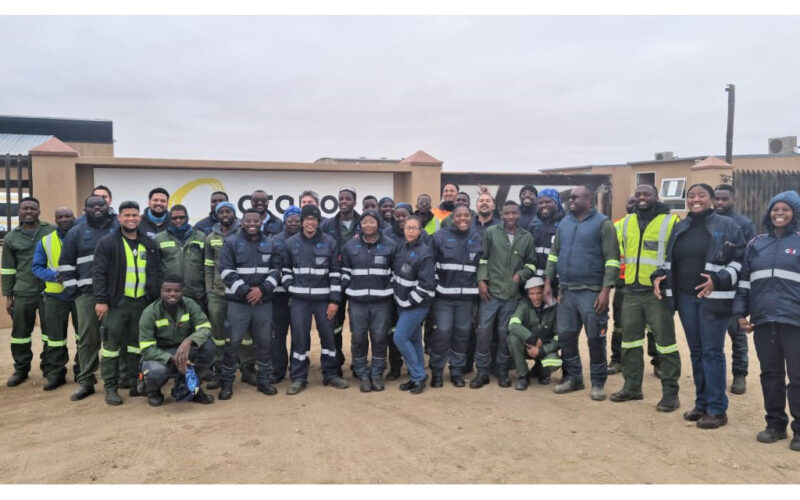Niël Terblanché
THE Erongo Desalination Plant (EDP) celebrated a new milestone after it reached a decade of supplying NamWater Swakopmund.
According to Christine De KlerkOrano Mining’s Communication and Communities Consultant, the company signed an agreement with the Namibia Water Corporation (NamWater) to supply water from the Erongo Desalination Plant to NamWater and its customers in the Erongo Region 10 years ago.
She said the official commissioning took place when the tap was opened and the first high-quality potable water from the plant streamed to the Erongo Region via the NamWater supply network.
“From a humble beginning of 166 000 cubic metres per month to today’s 1.2 million cubic metres per month of potable water, the EDP’s contribution to the development of the Erongo Region has continued to grow. With the uranium industry showing signs of steady recovery, the EDP is perfectly positioned to continue to supply the industry with a sustainable and reliable water resource unlocking the enormous potential of the region,” De Klerk said.
The cumulative production since the water supply to NamWater started in 2013 has now reached 94 million cubic metres and is expected to reach 100 million cubic meters by the end of the year.
“The plant has proven itself beyond any doubt, and will remain a stable water source for the Erongo Region in the foreseeable future,” she said.
The Erongo Desalination Plant is developed and fully owned by Orano Mining Namibia and operated by Nafasi Water. The current plant capacity is 20 million cubic meters per annum and it can be upgraded to achieve 25 million cubic meters per annum within the existing buildings. Should water demand require even more, the plant’s capacity can be increased up to 45 million cubic meters per year.
“As water remains a key enabler for development in Namibia, we continue to engage with the Namibian government and its organs like NamWater, to work together and explore opportunities to secure long-term water availability to the region and possibly beyond,” she said.
The company said that investment should be focused on upgrading and expanding the water pipeline and reservoir infrastructure, building a robust system to supply the coastal authorities and uranium mines. Further investment in expanding the transport infrastructure of water could lead to opening new and exciting development opportunities further into the Erongo Region of Namibia; for example, at Uis, Usakos, and Karibib as well as the possible new mining projects in that area, unlocking water to be a true enabler to economic development.
Originally built by Orano to supply water to its Trekkopje Mine near Arandis, the EDP is now an important contributor to the overall supply of potable water delivery system managed by NamWater, providing a substantial portion of the local drinking water supply of the town of Swakopmund as well as the nearby uranium mines and other industries.
Located 35 kilometres north of Swakopmund, near the settlement of Wlotzkasbaken in the Namib Desert, it is the largest reverse osmosis seawater desalination plant in Southern Africa.
The EDP has an impressive safety record, with twelve (13) years (2023 status) of continuous operation without a single Loss Time Injury (LTI). Similarly, its environmental management system adheres to the highest standards, as confirmed by ongoing impact testing around the operating site by independent third parties.
Orano Mining Namibia has announced it will source additional solar power for the Erongo Desalination Plant (EDP) under a ten-year power purchase agreement (PPA) with InnoSun Energy Holdings.
The agreement includes the establishment of a 5 MW solar plant at the Trekkopje Site just northeast of Arandis, from where power will be supplied to the EDP, situated at the coast 35 km north of Swakopmund. Under the agreement, InnoSun Energy Holdings will design, construct and operate the solar plant.
The plant is expected to be operational toward the end of 2024.
This will enable Orano to make the provision of water to the Erongo Region from a green electricity source more affordable in the long term and contribute greatly to efforts to reduce the carbon footprint of the EDP. Once commissioned, it is expected to reduce energy costs with the desalination process, and lower annual greenhouse gas emissions by 30 percent, which is equivalent to 9 722 tons of CO2 equivalent emissions.
This project is part of the Orano group policy aiming to lower its carbon footprint and increase the share of low-carbon electricity at its operating sites worldwide.




